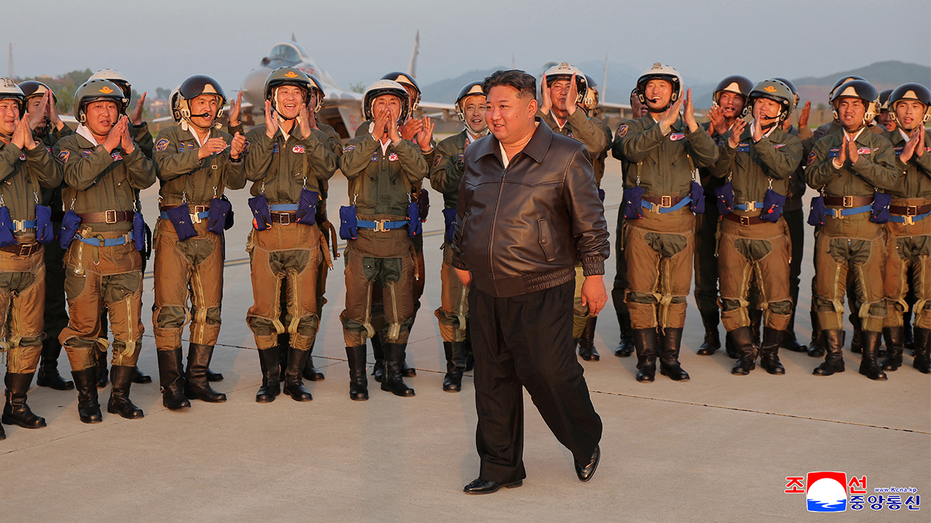North Korea’s Supreme Leader, Kim Jong Un, has been actively supervising recent air drills, emphasizing a robust stance on enhancing military preparedness. The drills, which involved significant participation from the nation’s air forces, were a clear display of the country’s commitment to strengthen its defense capabilities amid rising tensions in the region.
According to state media reports, Kim took a hands-on approach during the exercises, providing direct guidance and encouragement to the troops involved. The drills are seen as a critical component of North Korea’s military strategy as the country continues to navigate complex geopolitical dynamics, especially relating to its relationships with South Korea and the United States.
During the air drills, North Korean forces demonstrated a variety of aerial maneuvers that showcased their operational capabilities. The exercises included both tactical simulations and live-fire scenarios, which are intended to prepare troops for potential combat situations. Observers noted that the intensity and scope of these drills indicate an ongoing push by Kim to convey strength both internally to the North Korean populace and externally to its perceived adversaries.
In conjunction with the air drills, Kim Jong Un also emphasized the importance of developing indigenous military technology. Reports from state media highlighted his call for advancements in fighter jet capabilities and the need for improved air defense systems. This initiative represents a broader commitment to modernizing North Korea’s military infrastructure and ensuring that the nation remains self-sufficient in military production.
The exercises coincide with rising tensions on the Korean Peninsula. North Korea has pointed to ongoing military collaborations and drills between South Korea and the United States as provocations that warrant a strong military response. In light of these developments, Kim’s focus on bolstering air power is viewed as a strategic necessity for North Korea as it navigates the complexities of its security environment.
Analysts have noted that Kim’s maneuvers are also indicative of his broader policy agenda, which revolves around projecting power and asserting North Korea’s sovereignty. While international sanctions have aimed to limit the country’s military advancements, Kim has consistently pushed back against these constraints, viewing them as attempts to undermine North Korea’s legitimacy on the world stage.
The North Korean leader’s recent inspections of air force units serve a dual purpose; they affirm his position as Commander-in-Chief and serve to rally the troops and instill a sense of national pride. By placing himself at the forefront of military exercises, Kim aims to reinforce loyalty among the armed forces while also appealing to the North Korean populace, framing military readiness as essential for national survival.
Despite the significant focus on military capabilities, there are underlying economic challenges that continue to impact North Korea. As the country grapples with food shortages and economic hardship worsened by international sanctions and the effects of the COVID-19 pandemic, the government appears to be prioritizing military endeavors over other pressing social issues. This dynamic raises questions about the sustainability of such militarized policies in the long run.
International reactions to Kim Jong Un’s recent military activities have been mixed. While some countries remain cautious, fearing the potential for escalation, others urge diplomatic channels to reduce tensions. The United States and its allies continue to advocate for denuclearization talks, though these efforts have been met with resistance from Pyongyang, which maintains that its nuclear arsenal is a deterrent against external threats.
The international community is closely monitoring these developments, particularly as Kim Jong Un continues to assert his military ambitions. The success of North Korea’s air drills will undoubtedly influence perceptions of its military capabilities and could impact future dialogues regarding security and denuclearization on the Korean Peninsula.
Looking forward, it remains to be seen how Kim Jong Un will balance military enhancements with the nation’s economic needs. As he pushes ahead with his military agenda, potential ramifications on domestic stability and public sentiment will be crucial factors to watch. In the face of external pressures and internal challenges, the path that North Korea’s leadership chooses will significantly impact the broader dynamics of the region.
In conclusion, Kim Jong Un’s active supervision of North Korea’s air drills underlines a commitment to military readiness that appears unwavering despite economic difficulties. As tensions on the peninsula persist, the North Korean leader’s military initiatives signal a clear intention to fortify defense capabilities and assert the nation’s presence on the global stage. The interplay of military ambitions with diplomatic relationships will be instrumental in shaping the future trajectory of North Korea’s role in regional security dynamics.
































